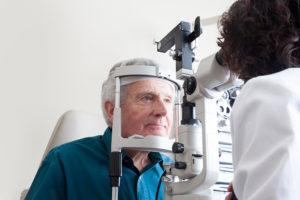
Eye pressure, also known as intraocular pressure (IOP), is a crucial aspect of eye health that often goes unnoticed until it becomes a concern. Maintaining optimal eye pressure is essential for preserving vision and preventing conditions like glaucoma, a leading cause of blindness worldwide. Keep reading to learn more about eye pressure, how it’s measured, its significance in eye health, and what you can do to keep it in check.
Eye pressure refers to the fluid pressure inside the eye, specifically within the anterior chamber—the space between the cornea and the iris. This clear fluid, called aqueous humor, is continuously produced and drained to maintain a stable pressure. The balance between the production and drainage of this fluid determines the eye’s pressure level.
Eye pressure is measured in millimeters of mercury (mmHg) and is typically assessed during an eye examination using a device called a tonometer. There are two primary methods for measuring eye pressure:
Maintaining normal eye pressure is crucial for preserving vision and overall eye health. Elevated eye pressure, known as ocular hypertension, can increase the risk of developing glaucoma—a group of eye conditions that damage the optic nerve, leading to vision loss and blindness if left untreated. Damage caused by glaucoma cannot be reversed, but there are treatment options to keep it from progressing, so early detection and treatment is critical.
Abnormally low eye pressure, though less common, can also pose risks and may indicate underlying conditions such as inflammation, retinal detachment, ocular trauma, or eye surgery complications.
While some factors affecting eye pressure, like genetics and age, are beyond our control, there are steps you can take to help maintain healthy eye pressure:
Understanding eye pressure and its significance in maintaining healthy vision is paramount for proactive eye care. By staying informed, prioritizing regular eye exams, and adopting a healthy lifestyle, you can play an active role in preserving your eye health and minimizing the risk of vision-threatening conditions like glaucoma.
If you live in the Washington DC area, schedule a comprehensive eye exam at Washington Eye Physicians & Surgeons to learn more.
© 2025 Washington Eye Physicians & Surgeons
The material contained on this site is for informational purposes only and is not intended to be a substitute for professional medical advice, diagnosis, or treatment. Always seek the advice of your physician or other qualified health care provider.